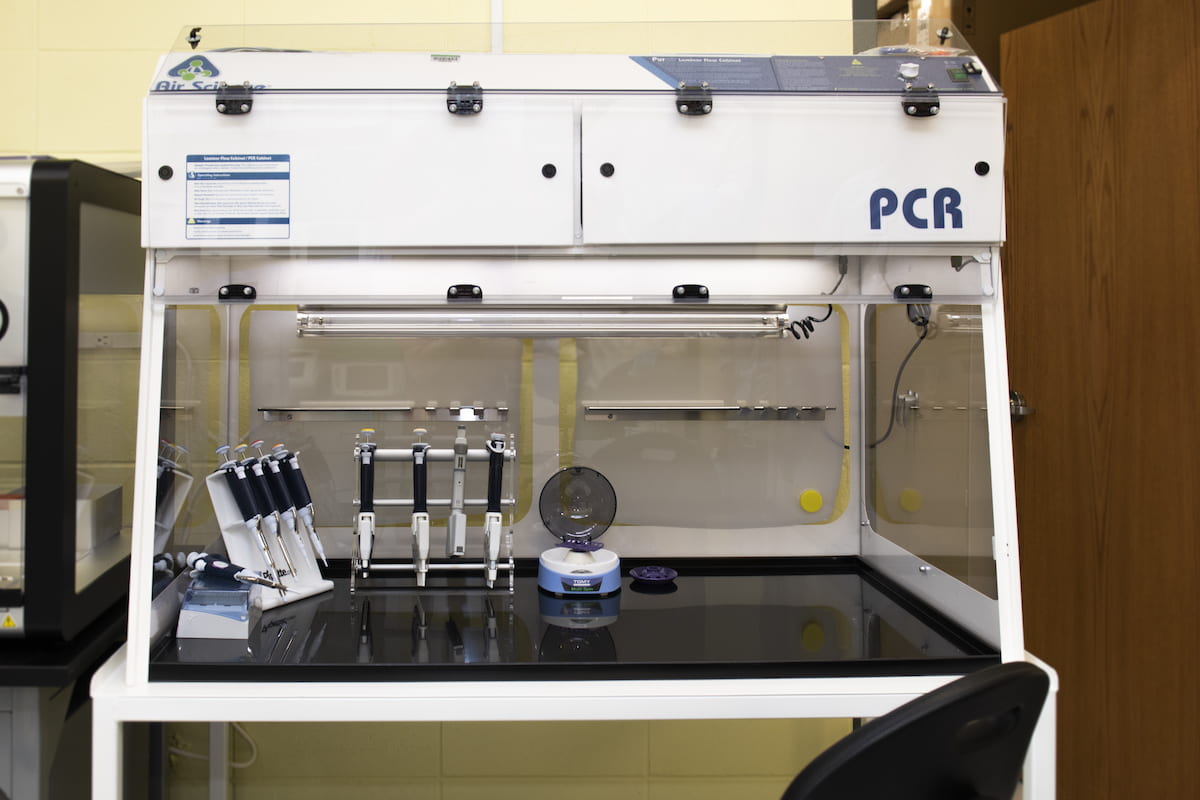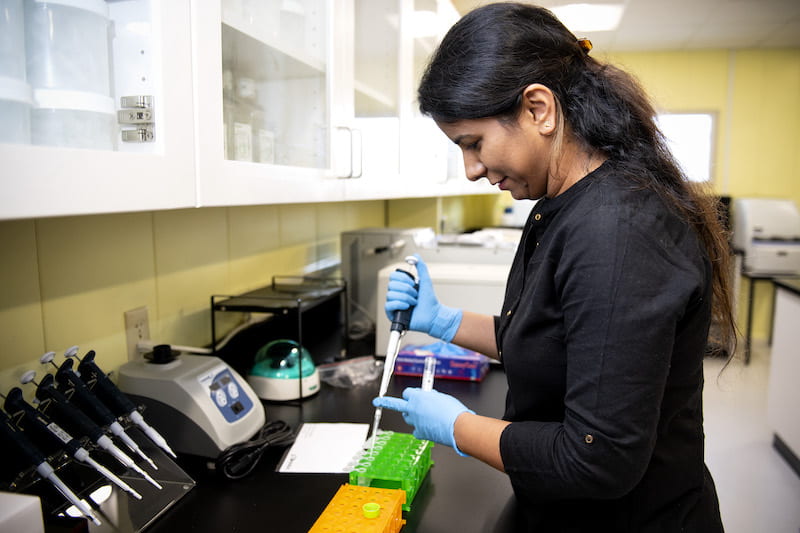Therapy
Eliminating pathogens of concern from plants — also known as clean-up therapy — is one of our core services at ACPC. We offer clean-up therapy on fruit crops, including blueberry, blackberry, strawberry, raspberry, and more.
Where Do Clean Plants Come From?
Eliminating Pathogens of Concern
When clients send plants to the ACPC, they are placed in an isolated room to prevent cross-contamination. To carry out the necessary tests, we require a single mother plant that can provide a minimum of five meristems and 20 grams of plant tissue for high-throughput sequencing (Diagnostics | Arkansas Clean Plant Center). The plant materials are given about one week to acclimate to their new conditions before clean-up therapy begins. At about the same time, the plant materials undergo an initial round of high-throughput sequencing to test for pathogens of concern.

Pathogen elimination covered under NCPN funding involves thermotherapy, which is carried out in growth chambers for 3-4 weeks. After that, we isolate and disinfect meristems from the plant materials.
The meristem is a region of actively dividing, undifferentiated cells, capable of developing into any type of plant tissue. Once disinfected, meristems can be cultured to produce new, pathogen-free plants.
Every introduction will go through one clean-up treatment and four rounds of HTS (one before clean-up treatment and three after) for a total of a two-year testing cycle.
Currently, we accept up to 15 introductions every year for clean-up, covered under National Clean Plant Network (NCPN) funding. Exceeding this number will cost $8,800 per clean-up round for clean-up/testing and $1,550 per year for maintenance.
Tissue Culture
Disinfected meristems generated during thermotherapy are then inoculated into growth media where they grow new shoots. The in-vitro shoots spend time in multiplication media before being transferred into rooting media.
Finally, the plants are transplanted into soil for further hardening and growth for at least three months.

Special Cases
Breeders may opt for advanced clean-up therapy in the future (at an additional cost), which can involve combinations with thermotherapy. The cost for stand-alone and combined clean-up therapies will be updated soon.
Clean-up Therapy Process Flow

ACPC Services
The ACPC offers comprehensive diagnostic services and clean-up therapy on fruit crops. Select a service below to learn more about how we can help your operation.



